
In this manual, several ways to configure or completely disable Windows 10 restart to install updates, while leaving the possibility of self restarting a PC or a laptop for this. See also: How to disable Windows 10 update.
Note: If your computer is rebooted when installing updates, it writes that we failed to complete (configure) updates. Cancel changes, then use this instruction: Failed to complete Windows 10 updates.
Setting up Windows 10 restart
The first of the ways does not imply a complete shutdown of the automatic reboot, but allows you to configure when it occurs, standard tools of the system.
Go to the Windows 10 parameters (Win + I keys or through the Start menu), go to the "Update and Security" section.
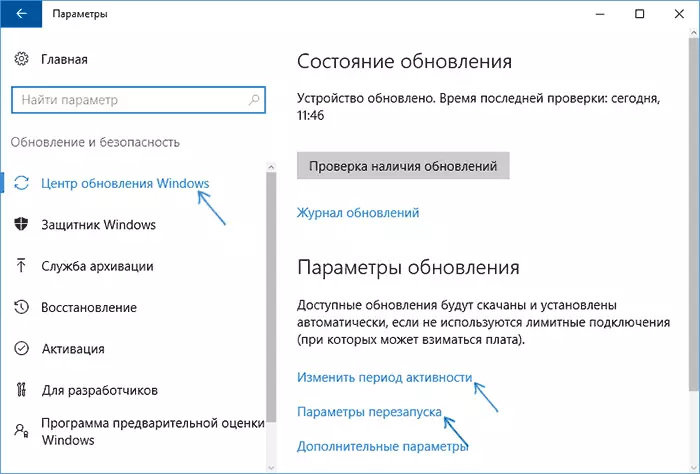
In the Windows Update Subsection, you can configure update and restart settings as follows:
- Change the period of activity (only in versions of Windows 10 1607 and above) - set a period of no more than 12 hours, during which the computer will not reboot.
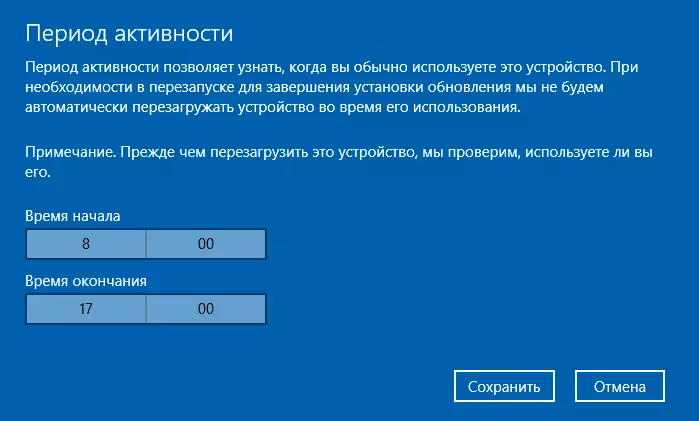
- Restart Settings - Setup Active only if updates are already loaded and restarted is scheduled. Using this option, you can change the scheduled automatic reboot time to install updates.
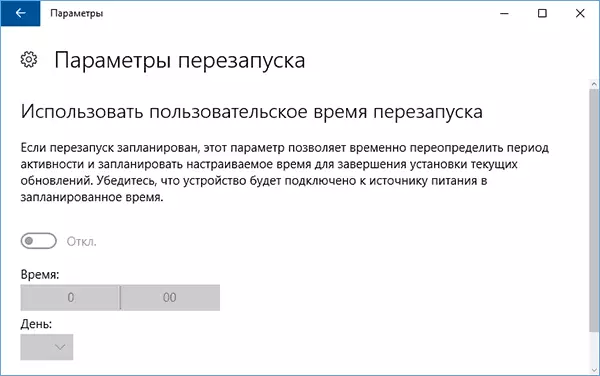
As you can see, completely disable this "function" with simple settings will not work. Nevertheless, for many users of the described feature may be enough.
Using the Local Group Policy Editor and Registry Editor
This method allows you to completely disable the Windows 10 automatic restart - using the Local Group Policy Editor in Pro and Enterprise versions or in the Registry Editor, if you have a home version of the system.
To start the steps to shut down using GPedit.msc
- Run the Local Group Policy Editor (Win + R, enter the gpedit.msc)
- Go to Computer Configuration - Administrative Templates - Windows components - Windows Update Center and double-click the "Do not automatically reboot when you automatically install updates if users are running in the system."
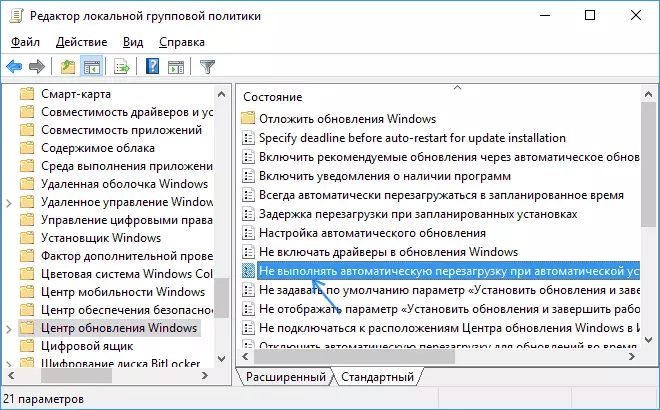
- Set the "Enabled" value for the parameter and apply the settings made.
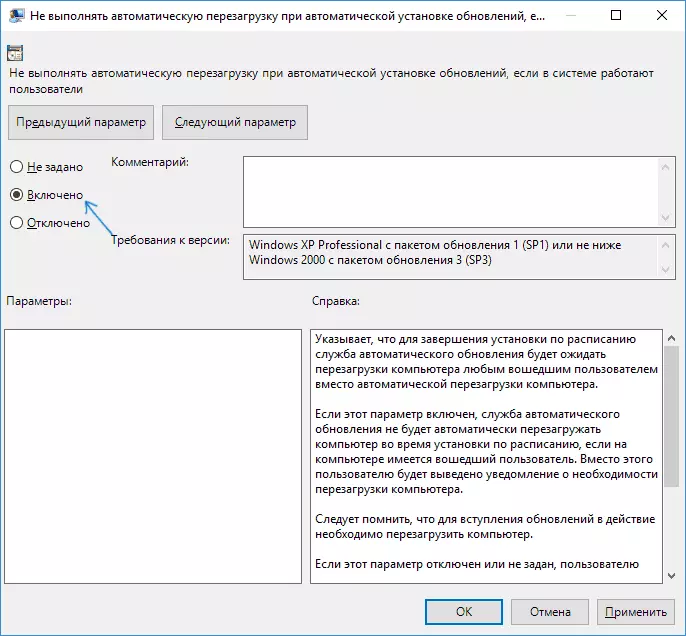
You can close the editor - Windows 10 will not automatically reboot if there are users who are logged in.
In Windows 10, home the same can be performed in the registry editor
- Run the registry editor (Win + R, enter Regedit)
- Go to the registry key (folders on the left) HKEY_LOCAL_MACHINE \ SOFTWARE \ POLICIES \ Microsoft \ Windows \ WindowsUpdate \ AU (if the "folder" is missing, create it within the WindowsUpdate partition by clicking on it right-click).
- Click on the right side of the registry editor with the right mouse button and select Create DWORD parameter.
- Set the name noautorebootwithloggedonusers for this parameter.
- Click on the parameter twice and set the value 1 (one). Close the registry editor.
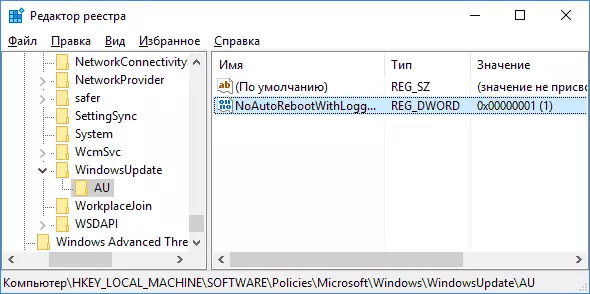
The changes made should enter into force without restarting the computer, but just in case you can restart it (since it is not always possible to change in the registry immediately take effect, albeit).
Disable reboot using task scheduler
Another way to turn off the Windows 10 restart after installing updates is to use the task scheduler. To do this, run the task scheduler (use the search in the taskbar or the Win + R keys, and enter the CONTROL SCHEDTASKS in the "Run" window).
In the task scheduler, go to the Job Planner Library folder - Microsoft - Windows - UpdateRCHESTRATOR. After that, right-click on the task with the name of the reboot in the task list and select "Disable" in the context menu.
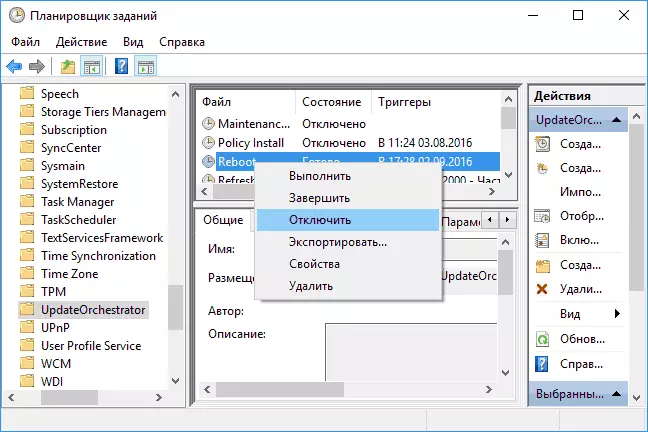
In the future, the automatic reset to install updates will not occur. At the same time, the updates will be installed when the computer or laptop is rebooting or manually.
Another option, if you perform everything described manually for you, it is difficult to use the Fidget Winaero Tweaker utility to disable the automatic reboot. The option is in the Behavior section in the program.
At the moment, it is all ways to disable automatic reboot when Windows 10 updates, which I can offer, but I think they will be enough if such behavior of the system delivers you inconvenience.
